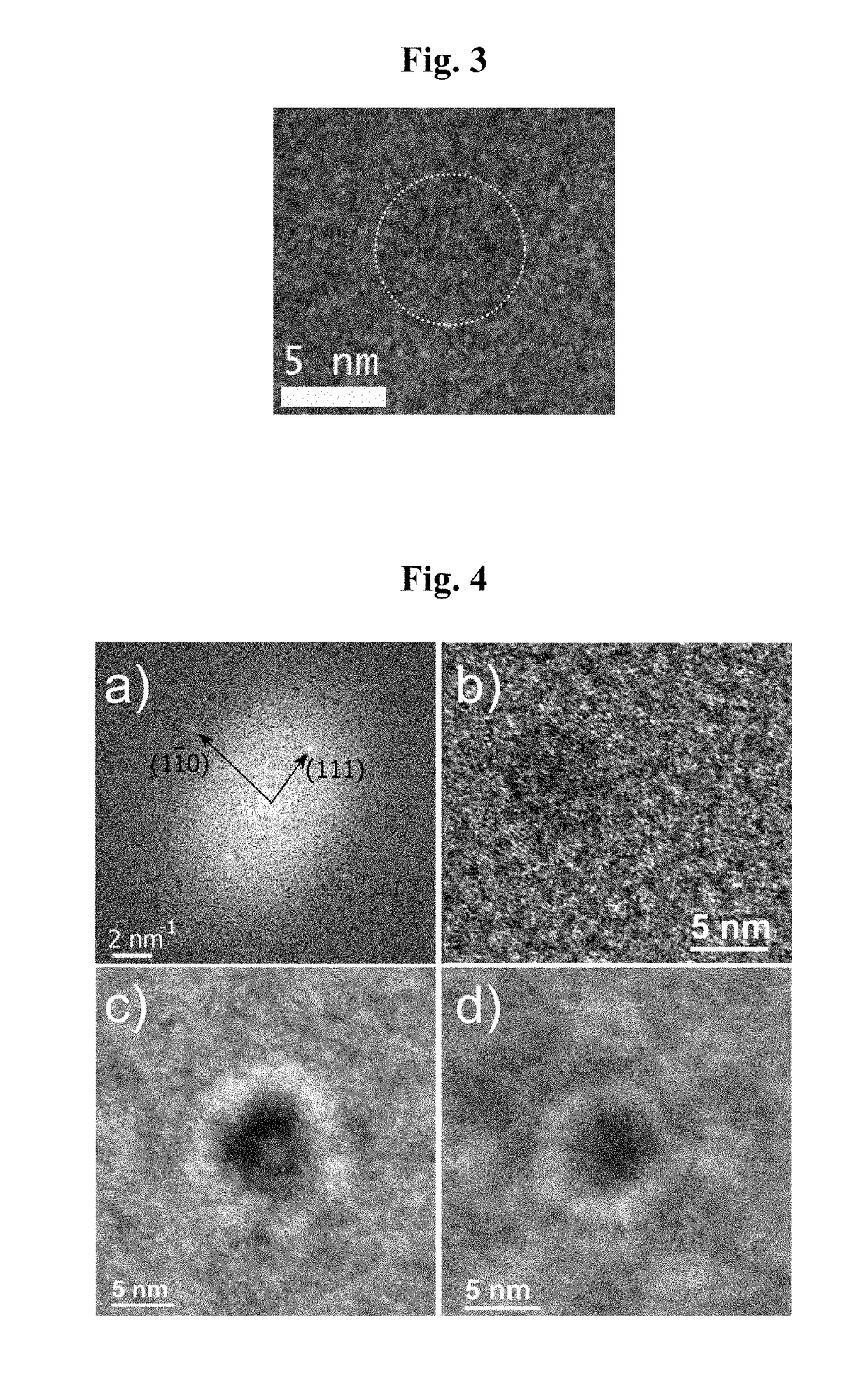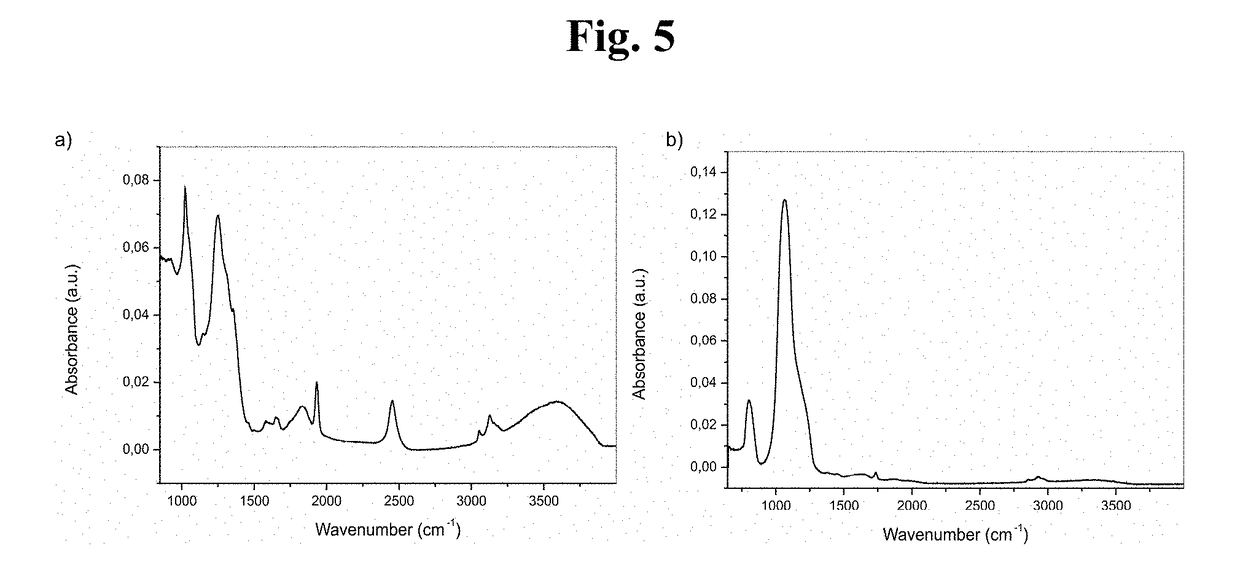Synthesized thin shell passivated silicon nanocrystals with a narrow photoluminescence linewidth
- Summary
- Abstract
- Description
- Claims
- Application Information
AI Technical Summary
Benefits of technology
Problems solved by technology
Method used
Image
Examples
example 1
[0026]Preparation of Silicon Nanocrystals with a Thin Surface Passivation Layer by Using Methyl Isobutyl Ketone
[0027]A crystallised form of the non-annealed hydrogen silsesquioxane molecule was added to methyl isobutyl ketone and stirred at about 60° C. on a magnetic stirrer for several hours. The methyl isobutyl ketone molecule bonded to the hydrogen silsesquioxane molecule in the drying / photo-activation / heat treatment prior to the final annealing. The presence of bonded methyl isobutyl ketone in hydrogen silsesquioxane was proven by Fourier transform infrared spectroscopy before annealing, and residua of methyl isobutyl ketone was observed after the annealing step as seen in FIG. 1. A droplet of the modified hydrogen silsesquioxane molecules with the solvent was placed on a silicon wafer carrier and dried out in air in order to remove the excess of solvent molecules and promote additional bonding between hydrogen silsesquioxane and methyl isobutyl ketone.
[0028]The modified hydroge...
example 2
[0031]Preparation of Silicon Nanocrystals with a Thin Surface Passivation Layer by Using Acetone
[0032]A crystallised form of the non-annealed hydrogen silsesquioxane molecule was added to acetone and stirred at about 60° C. on a magnetic stirrer for several hours. The acetone bonded to hydrogen silsesquioxane molecule and got into the cage structure of the hydrogen silsesquioxane in the drying / photo-activation / heat treatment prior final annealing. A droplet of the modified hydrogen silsesquioxane molecules with the solvent was placed on a silicon wafer carrier and dried out on air in order to remove excess of solvent molecules and promote additional bonding between hydrogen silsesquioxane and acetone.
[0033]The modified hydrogen silsesquioxane molecules on the carrier was transferred to a furnace and annealed in a 5% H2 and 95% Ar atmosphere. The sample was heated at 17° C / min until the desired 1000° C. temperature was reached, then it was annealed at this temperature for 1 hour. Aft...
examples 3-9
[0036]Preparation of Silicon Nanocrystals with a Thin Surface Passivation Layer by Using Other Organic Compounds
[0037]Various organic molecules have been tested in the procedure identical to example 1 with results summarized in Table I.
TABLE ILinewidth and peak position of the emission measuredat room temperature for the surface passivated nanocrystalsprepared with a range of organic compoundsLinewidthPeak positionExample No.Chemical compound(meV)(eV / nm)1Methyl isobutyl ketone211.97 / 6292Acetone171.93 / 6423Ethyl acetate30-602.00 / 6194Diethyl ether20-501.95 / 6355Butyl acrylate20-601.95 / 6356Octadecene20-602.07 / 5987Acetylacetone20-401.90 / 65081-Decanol20-601.85 / 6249Decane20-802.00 / 620
[0038]In example 1, the method resulted in the effective production of nanocrystals, wherein all nanocrystals have homogenous linewidth. In example 2, the resulting nanocrystals have even narrowest linewidth then in example 1, but production was less effective (lower amount of crystals was produced).
[0039]The o...
PUM
 Login to View More
Login to View More Abstract
Description
Claims
Application Information
 Login to View More
Login to View More - R&D
- Intellectual Property
- Life Sciences
- Materials
- Tech Scout
- Unparalleled Data Quality
- Higher Quality Content
- 60% Fewer Hallucinations
Browse by: Latest US Patents, China's latest patents, Technical Efficacy Thesaurus, Application Domain, Technology Topic, Popular Technical Reports.
© 2025 PatSnap. All rights reserved.Legal|Privacy policy|Modern Slavery Act Transparency Statement|Sitemap|About US| Contact US: help@patsnap.com



